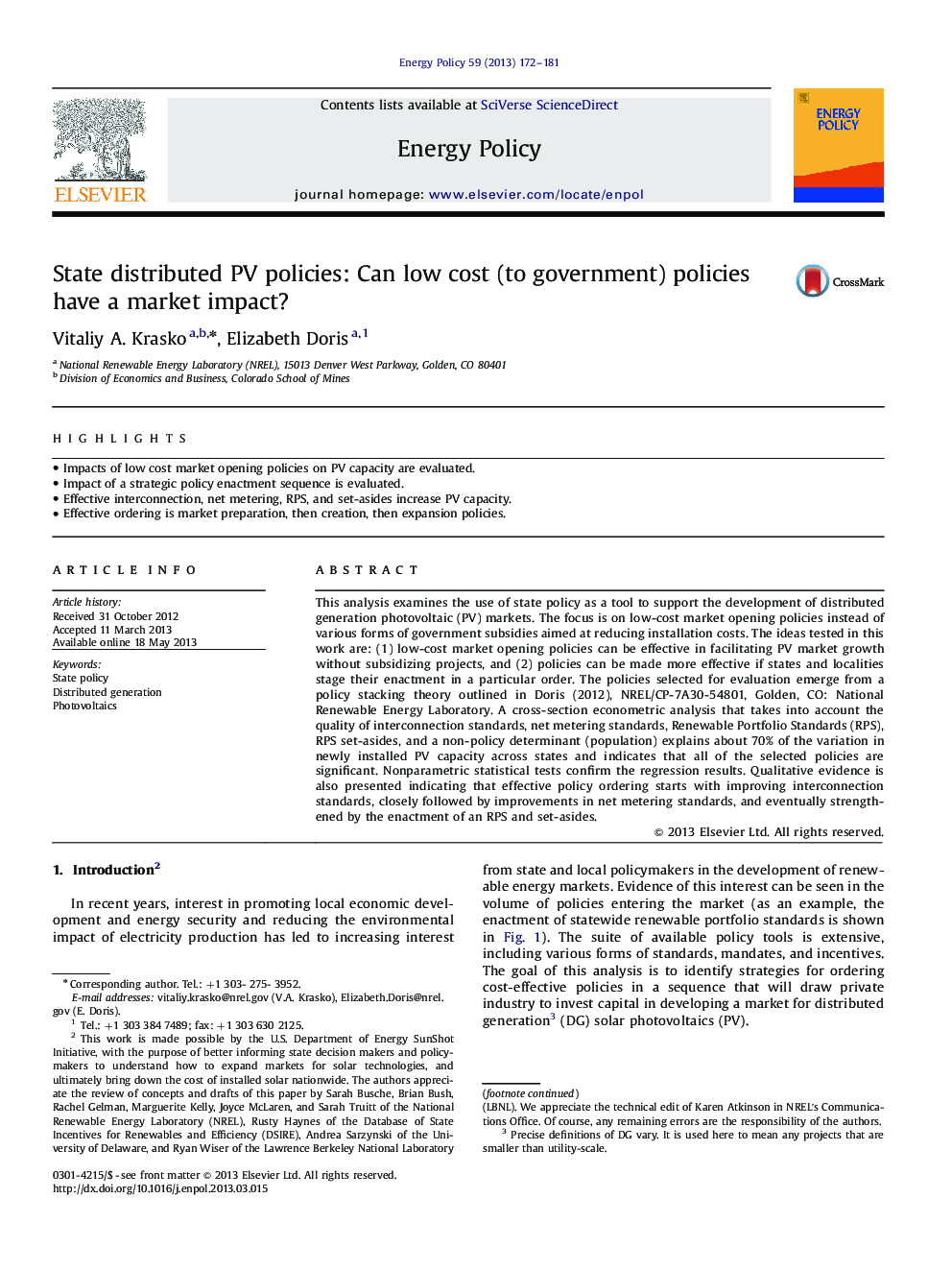| Article ID | Journal | Published Year | Pages | File Type |
|---|---|---|---|---|
| 7404205 | Energy Policy | 2013 | 10 Pages |
Abstract
This analysis examines the use of state policy as a tool to support the development of distributed generation photovoltaic (PV) markets. The focus is on low-cost market opening policies instead of various forms of government subsidies aimed at reducing installation costs. The ideas tested in this work are: (1) low-cost market opening policies can be effective in facilitating PV market growth without subsidizing projects, and (2) policies can be made more effective if states and localities stage their enactment in a particular order. The policies selected for evaluation emerge from a policy stacking theory outlined in Doris (2012), NREL/CP-7A30-54801, Golden, CO: National Renewable Energy Laboratory. A cross-section econometric analysis that takes into account the quality of interconnection standards, net metering standards, Renewable Portfolio Standards (RPS), RPS set-asides, and a non-policy determinant (population) explains about 70% of the variation in newly installed PV capacity across states and indicates that all of the selected policies are significant. Nonparametric statistical tests confirm the regression results. Qualitative evidence is also presented indicating that effective policy ordering starts with improving interconnection standards, closely followed by improvements in net metering standards, and eventually strengthened by the enactment of an RPS and set-asides.
Related Topics
Physical Sciences and Engineering
Energy
Energy Engineering and Power Technology
Authors
Vitaliy A. Krasko, Elizabeth Doris,
